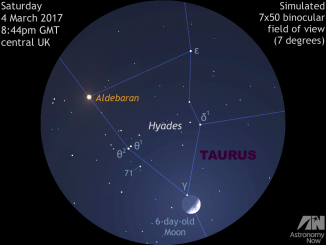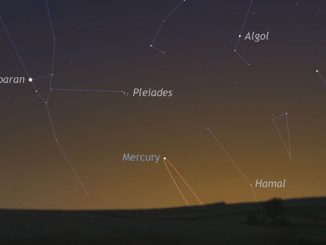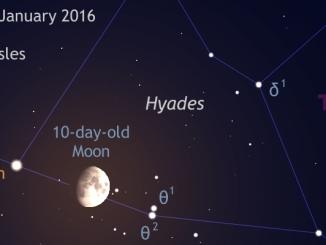
See the Moon glide through the Hyades on 4-5 March
On the night of 4-5 March 2017, UK observers with clear skies can see an occultation bonanza as the 6-day-old waxing crescent Moon passes in front of prominent members of the Hyades open cluster in Taurus. Some hours later, after the Moon has set in the British Isles, first-magnitude star Aldebaran is occulted across a large swathe of North America.









